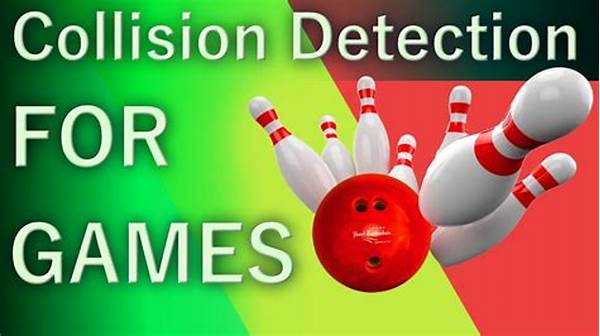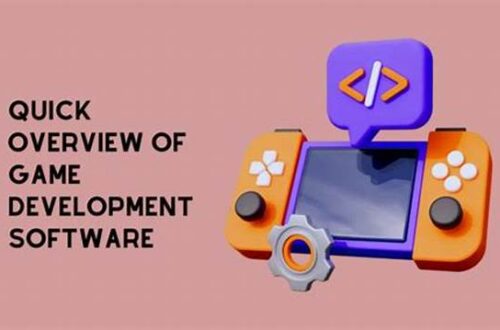Hey there, fellow gamers and coding enthusiasts! Today, we’re diving headfirst into the thrilling world of collision response in video games. Whether you’re a game developer or just someone curious about what happens behind the scenes when game objects collide, you’re in for a treat. We’ll explore what collision response is all about and why it’s so essential for creating those immersive gaming experiences we all love. So, let’s get started!
Read Now : Game Building For Creative Enthusiasts
Understanding the Basics of Collision Response in Video Games
Alright, let’s break it down. At its core, collision response in video games is all about determining what happens when two or more objects in a game world collide. Picture this: you’re playing a racing game and your car crashes into a wall. The game needs to decide how the car reacts—does it bounce back, get damaged, or maybe both? This is collision response in action, and it’s crucial for providing realistic and engaging gameplay.
In the magical realm of gaming, collision response is like a silent puppeteer. It calculates velocities, angles, and impacts—keeping things interesting! When characters bump into each other or interact with the environment, collision response ensures events unfold smoothly, maintaining that suspension of disbelief crucial to a captivating gaming experience.
Complex algorithms and physics engines are often working tirelessly in the background to ensure each collision feels just right. Whether it’s subtle nuances like a character’s hair moving naturally after a bump or dramatic ones like crashing structures, collision response ensures the game world feels alive and responsive. That’s why it’s a staple in game development.
How Collision Response in Video Games Works
1. Detection and Decision: It all begins with detecting a collision, then deciding how the game objects should respond.
2. Physics Engines at Play: Most games use physics engines to simulate realistic interactions—think of them as the game world’s “laws of physics.”
3. Immediate Feedback: Collision response ensures immediate feedback to player actions, enhancing the game’s fluidity and immersion.
4. Balancing Realism and Entertainment: Developers often tweak collision outcomes to ensure both realism and gameplay fun are balanced.
5. Preventing Game-breaking Bugs: Effective collision response in video games helps prevent objects from clipping through each other or getting stuck, which can ruin immersion.
Real-World Examples of Collision Response in Video Games
When you’re in-game, perhaps careening down a track in a racing simulator, it’s collision response in video games that ensures you don’t fly off the map with every turn. Each collision cue—from the judder in a steering wheel to the auditory crash impact—relies on precise collision responses calculated in real-time.
In action-adventure games, battling enemy hordes feels satisfying thanks to a well-coded collision response. When your hero’s sword connects with an adversary, the game calculates the exact reaction—be it a dramatic knockback or a mild step backward. These interactions elevate gameplay, making actions feel impactful and rewarding.
The Importance of Collision Response Algorithms
Collision response algorithms are the unsung heroes behind the seamless gaming experiences we adore. These algorithms decide how objects react upon impact, determining bounce, friction, and more. Imagine playing a game where every touch felt off—it would be chaotic and unenjoyable. That’s why these algorithms are indispensable.
1. Ensuring Seamless Interactions: Collision response algorithms make in-game interactions believable and intriguing.
2. Predicting Object Behavior: They predict how objects behave post-collision, enhancing realism.
3. Optimizing Game Performance: Efficient algorithms balance realness and game performance, enabling smoother gameplay.
4. Providing Immersive Experiences: They ensure all elements interact seamlessly, supporting immersion and narrative flow.
Read Now : Enhanced Modeling Algorithms For Physics
5. Enhancing Player Satisfaction: Good collision responses lead to satisfying and believable player experiences.
6. Simplifying Complex Physics: They break down complex physical interactions into manageable computations.
7. Supporting Game Development: Developers build more creative environments without fearing unpredictable collisions.
8. Boosting Game Reliability: These algorithms minimize glitches, providing a more reliable gaming experience.
9. Adapting Across Genres: From platformers to simulators, collision responses adapt to genre-specific needs.
10. Ensuring Real-Time Feedback: Real-time collision responses ensure players experience immediate and logical game consequences.
Collision Response in Video Games: Challenges and Innovations
Creating collision response in video games isn’t all fun and games; it comes with a set of challenges. Developers must find the perfect balance between realism and performance. Too much realism might slow down the game, while too little makes it feel artificial. Innovations in AI and machine learning are helping overcome these hurdles by predicting and improving interactions in real-time.
Additionally, obtaining the right tools and engines is crucial for achieving those responsive, immersive game environments. The complexities of modern systems require developers to be more innovative than ever. Through dedication and brilliance, today’s developers continue to break new ground, crafting more authentic and responsive worlds that captivate players worldwide.
Future Perspectives on Collision Response
As gaming technologies evolve, collision response in video games is also seeing exciting advancements. Modern engines are being equipped with more sophisticated physics systems, allowing even more detailed and dynamic interactions. Machine learning may soon contribute to more intuitive collision responses, further blurring the line between digital simulations and reality.
With VR and AR on the rise, collision response will play a pivotal role in the immersive experiences offered. We can expect future games to be more responsive and lifelike, setting the stage for an unprecedented level of interactivity. With constant innovations, the future holds an exciting potential for collision response in games.
Conclusion: Wrapping Up the Magic of Collision Response
In the vast, exciting world of gaming, collision response in video games serves as a crucial pillar, ensuring interactions feel genuine, enjoyable, and immersive. It’s the magic wand that transforms code into captivating experiences, bridging visuals and physics to create the lifelike worlds we dive into for fun, adventure, and the joy of gaming.
So, the next time you play, spare a thought for the complex dance of algorithms making every collision feel so real. Behind every perfect crash, bounce, and impact lies an intricate blend of physics and creativity. Here’s to collision response—the unseen hero keeping our gaming adventures alive and kicking!





